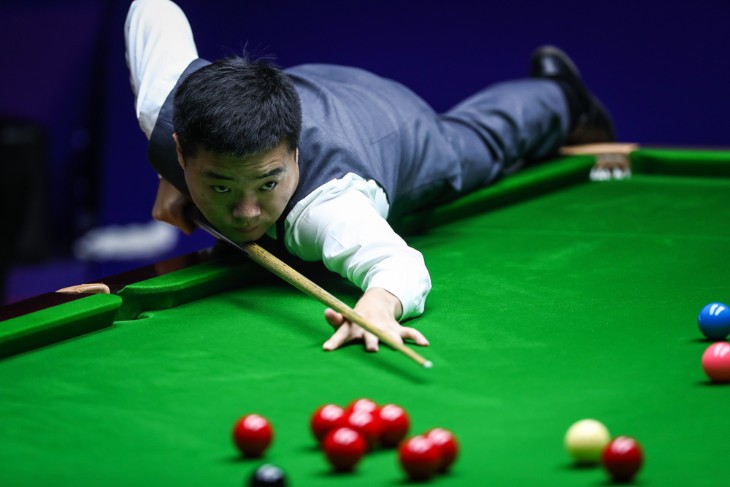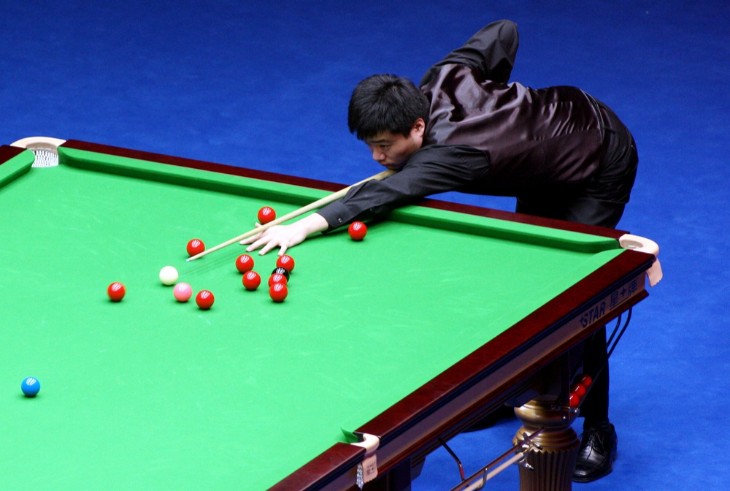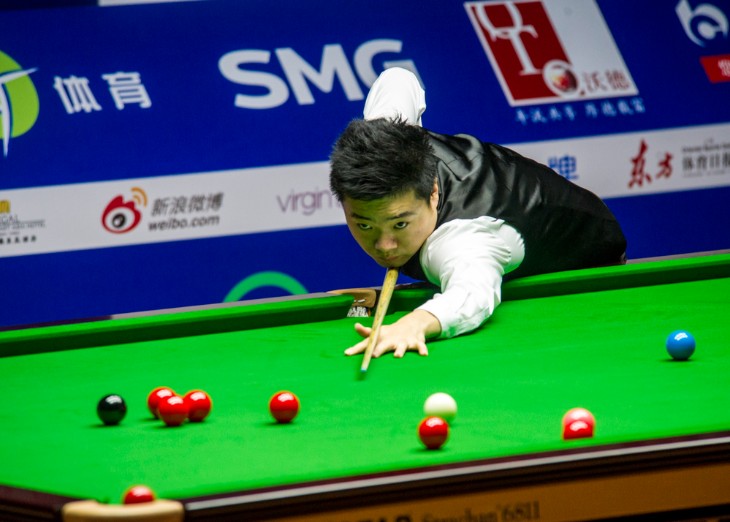- The Importance of Testing Snooker Cues Before Purchase
- Understanding the Anatomy of a Snooker Cue
- Evaluating the Weight and Balance of a Cue
- The Significance of Cue Length and How to Choose the Right One
- Selecting the Perfect Tip for Your Snooker Cue
- Testing for Straightness: Ensuring Your Cue Is Up to Par
- The Role of Shaft Smoothness in Cue Performance
- Final Takeaway
When you step into the world of snooker, the cue becomes your most trusted companion. Choosing the right snooker cue can significantly impact your game, making the process of testing and evaluating options a crucial step for any player.
Whether you're a seasoned professional or a beginner, understanding how to assess snooker cues is key to enhancing your performance on the table. This guide aims to demystify the process, offering insights into what makes a good cue and how to find the perfect match for your playing style.
The Importance of Testing Snooker Cues Before Purchase
Testing snooker cues before you buy them is crucial. It's the best way to ensure that the cue you choose suits your playing style and feels right in your hands. Every player is unique, and a cue that works well for one person might not be the best choice for another. This is why personal testing is so important.
When you test a cue, you get a feel for its weight and balance. These factors greatly influence your control over the cue ball and your overall game performance. A cue that's too heavy or too light for your preference can throw off your shots. By testing, you can find a cue with the right weight that feels comfortable and easy to handle.
The length of the cue also matters. During testing, you can see if the cue's length is appropriate for your height and arm length. Playing with a cue that's too long or too short can make playing accurately much harder. Testing helps you avoid this issue by letting you choose a cue that matches your physical requirements.
Testing also allows you to check the cue's straightness and the smoothness of its shaft. These aspects can affect your shots' accuracy and the cue's feel during play. By checking these yourself, you ensure there are no flaws that could hinder your performance.
Finally, testing cues gives you the chance to try out different tip types. The tip's hardness can affect how you strike the ball, and what works for one player might not work for another. By testing, you can pick a tip that complements your playing technique.
Testing snooker cues before purchase is essential. It ensures the cue feels right for you in terms of weight, balance, length, straightness, shaft smoothness, and tip type. This way, you can be confident that your cue will enhance your game, not hinder it.
Understanding the Anatomy of a Snooker Cue
Understanding the anatomy of a snooker cue is key to selecting the right one for your game. A snooker cue consists of several parts, each playing a critical role in its performance. Here's a breakdown of the main components:
- Tip: The tip is the cue's contact point with the ball. It's usually made of leather and comes in different hardness levels. A softer tip absorbs more impact, offering greater control for spin and delicate shots. A harder tip provides more power but less control. Choosing the right tip hardness is crucial for your playing style.
- Ferrule: Just below the tip is the ferrule. This small, rigid cylinder protects the cue's end and helps transfer the shot's force from the tip to the cue. It's typically made from materials like plastic or metal. The ferrule's quality can affect shot precision and the cue's longevity.
- Shaft: The shaft is the long, slender part of the cue you grip during play. It should be straight and smooth, allowing for a consistent and comfortable stroke. The shaft's material, often wood, significantly influences the cue's feel and responsiveness.
- Joint: The joint connects the shaft to the butt of the cue. It can be made from various materials, including metal, plastic, or wood. The type of joint affects the cue's balance and the feedback you feel when taking a shot. A well-made joint ensures a solid and consistent connection between the shaft and the butt.
- Butt: The butt is the thicker end of the cue, which you hold with your back hand. It often contains weights to balance the cue. The butt's design can include decorative elements and is made from heavier materials to counterbalance the shaft's weight.
- Bumper: At the very end of the butt is the bumper, made of rubber. It protects the cue from damage when it rests against the floor or a wall.

Evaluating the Weight and Balance of a Cue
Evaluating the weight and balance of a cue is a critical step in choosing the right snooker cue for your game. The weight of a cue can influence how you control the ball, while its balance affects the feel and handling during play.
Cues typically weigh between 17 and 20 ounces. Lighter cues offer more control and are easier to handle, making them a good choice for beginners or players who prefer a softer touch. Heavier cues, on the other hand, provide more power behind shots, favoured by players who like to play with force.
Finding the right balance point of a cue is equally important. The balance point is where the cue feels neither front-heavy nor back-heavy but comfortably balanced in your hand. It usually falls about 10 to 12 inches from the butt of the cue. A well-balanced cue allows for smoother, more controlled shots, enhancing your overall game.
When evaluating a cue, hold it in your playing stance and feel its weight distribution. A cue that feels too heavy at the front or back may not suit your style of play. Instead, look for a cue that feels evenly balanced, giving you confidence and control over your shots.
Testing different cues to find the right combination of weight and balance is essential. Everyone has their own preference, and what works for one player may not work for another. Pay attention to how the cue feels during play, and don't rush your decision. Choosing a cue with the right weight and balance for you can significantly improve your performance on the snooker table.
The Significance of Cue Length and How to Choose the Right One
The length of a snooker cue plays a crucial role in how well you can control your shots and comfortably play the game. Snooker cues typically range from 57 to 58 inches in length, but finding the right one for your height and arm length is essential for optimal performance.
A cue that's too long can be cumbersome and difficult to handle, especially for players with shorter arms or smaller statures. It can lead to awkward shots and decrease your accuracy on the table. On the other hand, a cue that's too short might force you to overextend or adjust your stance unnaturally, affecting your control and the power behind your shots.
To choose the right length, stand in your usual snooker stance and hold the cue as if you're about to strike the ball. The tip should comfortably reach the white ball without you having to stretch or bend unnaturally. The butt of the cue should rest snugly in your hand, allowing for a smooth, controlled stroke.
For most adults, the standard length of 57 to 58 inches works well. However, if you're taller or have longer arms, you might benefit from a slightly longer cue. Conversely, younger players or those with a shorter reach might find a shorter cue more comfortable and easier to manage
Ultimately, the right cue length is one that feels natural and comfortable when you play. It should complement your physique and playing style, allowing you to focus on your technique rather than adjusting to the cue. Testing different lengths and practicing with them is the best way to determine which cue length is perfect for you, ensuring your game is as strong and accurate as possible.
Selecting the Perfect Tip for Your Snooker Cue
Selecting the perfect tip for your snooker cue is a decision that significantly affects your gameplay. The tip is the only part of the cue that makes direct contact with the ball, so its characteristics can change how you control shots. Here are key factors to consider:
- Tip Hardness: Tips come in various hardness levels, from soft to hard. Soft tips absorb more impact, offering greater control for spin and delicate shots. They allow for a better feel of the shot but wear down more quickly. Hard tips, on the other hand, are more durable and provide a solid hit, suitable for players who prefer power over spin. Medium hardness tips strike a balance between control and durability, making them a versatile choice for many players.
- Tip Size: The size of the tip should match the diameter of your cue's ferrule. Standard sizes range from 9 to 10 millimetres for snooker cues. A larger tip provides a bigger contact area with the ball, which can be forgiving for beginners. A smaller tip, however, offers more precision and is often preferred by experienced players.
- Tip Material: Most tips are made of leather, but the quality and treatment of the leather can vary. High-quality, layered leather tips are known for their consistency and reliability. They provide a consistent feel over time, allowing for accurate shots.
- Maintenance: Consider how much maintenance you're willing to perform on your tip. Soft tips require more frequent shaping and replacement due to quicker wear. If you prefer a low-maintenance option, a harder tip might be the right choice for you.

Testing for Straightness: Ensuring Your Cue Is Up to Par
Testing for straightness is a critical step in ensuring your snooker cue is up to par. A cue that isn't straight can significantly affect your accuracy and the quality of your shots. Here's how you can check if your cue is straight and ready for play.
First, hold the cue at eye level with the tip pointing towards you. Look down the length of the shaft towards the butt. The cue should form a straight line without any curves or bends. This simple visual inspection can quickly reveal any obvious issues.
Another effective method is to roll the cue on a flat surface, such as a snooker table. Place the cue on the table and gently roll it back and forth. Watch and feel for any wobbles or jumps. A straight cue will roll smoothly without any interruptions. If the cue jumps or wobbles, it may indicate a bend or warp in the shaft.
It's also helpful to perform these checks in good lighting to ensure you don't miss any subtle bends. Sometimes, a cue might appear straight at a glance but reveal slight imperfections upon closer inspection.
If you're testing a cue before purchase, don't hesitate to ask for permission to perform these checks. Any reputable seller or manufacturer will understand the importance of a straight cue and should accommodate your request.
By taking the time to test for straightness, you ensure your cue is in optimal condition for playing. A straight cue is fundamental to achieving consistent, accurate shots, making this step crucial for any serious snooker player.
The Role of Shaft Smoothness in Cue Performance
The smoothness of a cue's shaft plays a crucial role in its overall performance on the snooker table. A smooth shaft ensures a consistent and comfortable stroke, allowing you to execute shots with precision and control. Here's why shaft smoothness matters and how it affects your gameplay.
When the shaft of a cue is smooth, the cue glides effortlessly through your fingers during your stroke. This smooth action minimises friction and resistance, allowing for a more fluid and natural movement. As a result, you can deliver your shots with greater accuracy and finesse, enhancing your overall performance on the table.
A smooth shaft also improves your grip on the cue, providing a more secure and stable hold. This is particularly important during intricate shots that require delicate control over the cue ball. With a smooth shaft, you can maintain a consistent grip pressure throughout your stroke, reducing the risk of miscues and ensuring a clean contact with the ball.
In addition to enhancing your stroke mechanics, a smooth shaft contributes to the overall feel of the cue. Players often describe the sensation of a smooth shaft as comfortable and responsive, making it easier to connect with the cue and focus on the game. This tactile feedback is essential for building confidence and consistency in your gameplay.
To ensure that your cue shaft remains smooth and optimised for performance, regular maintenance is essential. This includes cleaning the shaft with a cue cloth or shaft cleaner to remove any dirt, oil, or residue that may accumulate over time. Additionally, applying a small amount of cue wax or conditioner can help to keep the shaft smooth and conditioned, prolonging its lifespan and preserving its performance capabilities.
The smoothness of a cue shaft is a fundamental aspect of cue performance in snooker. A smooth shaft enables a fluid stroke, enhances grip stability, and contributes to the overall feel of the cue, ultimately improving your gameplay experience on the table. Regular maintenance is key to preserving shaft smoothness and maximising cue performance over time.
Final Takeaway
Choosing the right snooker cue is a personal journey that can significantly affect your enjoyment and success in the game. By understanding the critical factors to consider and taking the time to test and evaluate your options, you can make a selection that enhances your performance and feels like an extension of yourself.
Remember, the perfect cue is out there waiting for you; it's just a matter of finding it. With this guide, you're now equipped to navigate the world of snooker cues with confidence and precision, ready to take your game to the next level.




.webp)


 (1).webp)




















